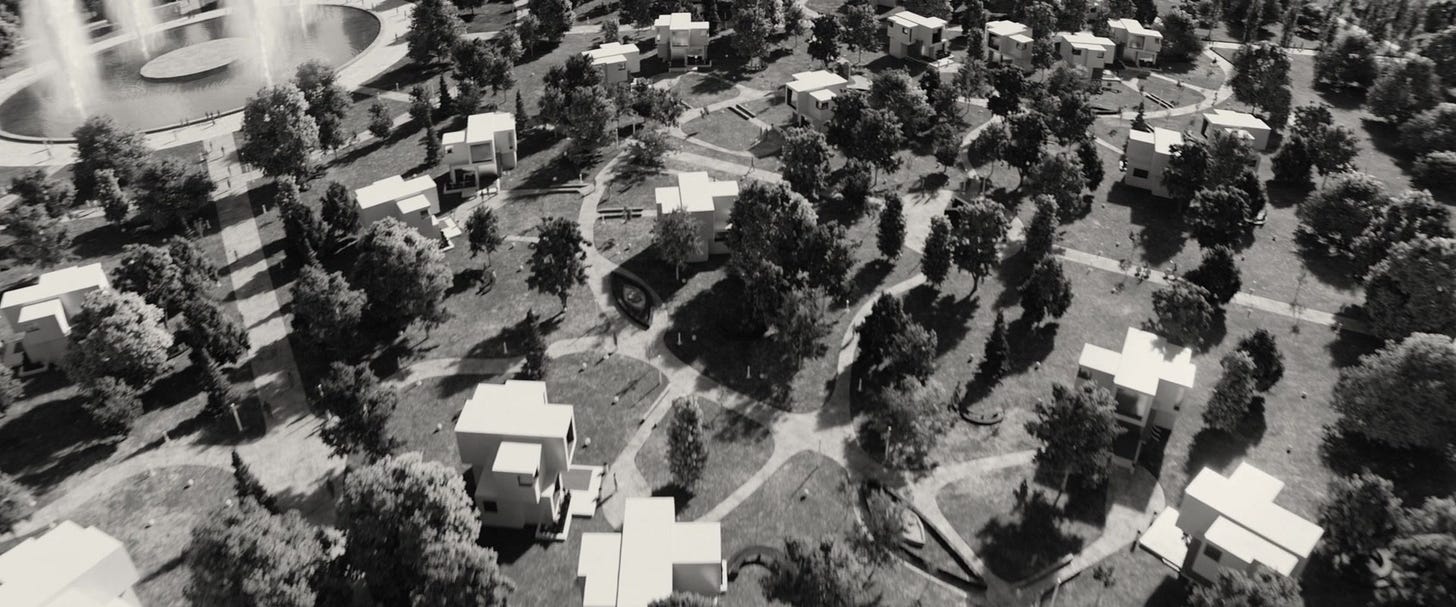The Sameness Plague
Everything is the same. Houses, movies, clothes, logos, food are all the same.
In junior high school, we read The Giver. The book centers around the protagonist, a 12-year-old boy, Jonas. He lives in a society of “Sameness”. Sameness removes emotional depth from the inhabitants to promote equality. No color, climate, or terrain exists. People are assigned jobs by the elders based on community needs. Everyone appears similar. Marriages are arranged. Life lacks depth and diversity to create a harmonious society.
The book portrays a society that appears utopian but is dystopian. However, this isn’t the scariest part. Instead, the book foreshadows the uniformity, lack of depth and diversity, and absence of creativity that leaks into today.
Walt Disney Studios is caught in a recurring loop of the same movie. They released seven movies in 2024 that were a part of a franchise, a sequel, or an installment. New housing is cookie-cutter. New developments are littered with 5-over-1 and tract housing. The Giver saw it coming in 1993. Anything to maximize efficiency and cost-effectiveness at the expense of quality, beauty, and creativity. Corporate logos continue to be refined to become simpler. The best sports uniforms are the 1980s throwbacks, not the 2024 city edition.
It is an endless repetition of iterations that resemble the source. They were made to differ, but to minimize cost, the only thing that changes is the quality of the product. When the older generations shout, “They don’t make ‘em like they used to!” They were onto something with the products these days. As Toby Shoring writes in Life After Lifestyle,
“Stare long enough, and you begin to see the whole: an economy where culture is made in service of brands. To be even more literal: cultural production has become a service industry for the supply chain.”
Jonas is assigned the position Receiver of Memory, the individual given the society’s memories before Sameness. He is a living library of the community. Only the Giver, the current receiver of memory, and Jonas can see color and experience emotion. As the training for Jonas’ unique role intensifies he feels distant to his classmates.
Jonas’ world is similar to today. Jonas spends less time with his classmates because of his demanding training, and we spend less time focusing on building quality works, what we used to know. Today becomes distant from previous eras as time inches forward. No longer are architectural spectacles like the Space Needle or the Eiffel Tower built because we can. Flimsy plastic use and the cheapening of products are the exports of this decade. Plastic use per capita in The States is expected to increase by 44% from 2021 to 2050. It is worse in China and India, and it is even worse if you zoom out on plastic use growth since 1950. Food is now filled with additives, preservatives, and dyes. Gatorade once had five ingredients. Now it has more than 13. People complain streaming services abandon shows in the name of profit and produce content that aligns with the era of slop. It doesn’t have to be this way.
Jonas begins to receive memories from the Giver. For the first time, he sees color, terrain, emotion, hunger, and war, and with that comes the dark truths of the community. He sees life without sameness – a life full of emotion, creativity, and diversity.
He sees everything doesn’t have to be plagued by uniformity. Houses can have character, beautiful architecture, and uniqueness. People can feel emotions. Creatives can expand and resist the typical themes.
As the memories transfer, Jonas questions the community and his desire to be a member. Jonas and the Giver agree he will leave the community and return all the memories. As the story ends, Jonas leaves the community and finds a house filled with color, warmth, emotions, and joy.
The plague of sameness isn’t new. It has only been exemplified and made worse, but people, similar to Jonas, want back what they once had. Society is beginning to understand what Jonas saw and shun sameness. The wave of vintage and resale stores is getting stronger.
Secondhand apparel sales increased 11% in 2023 from the prior year. The apparel resale industry grew seven times the rate of the broader retail industry. The used clothing market size has almost doubled since 2018. People want the uniqueness and diversity that products years ago provided. Everything is one-to-one. The beauty of secondhand markets is you get unique, quality items that matter more to you and much less to the seller creating, in your eyes, an absolute bargain. It recycles products. It creates uniqueness.
Creations don’t have to maximize shareholder value, cut costs, and capture efficiencies. The true color and radiant light in life come from the items marked by quality. Lego bricks from the 70s are still compatible with the bricks today. Arizona Iced Tea is still one dollar. Costco hot dogs have always retailed for $1.50. LL Bean allows returns within a year of purchase, no questions asked. The time constraint of the return policy was infinite until, you know, people got greedy. LL Bean doesn’t worry about returns when their product is infused with quality.
Jonas saw what a colorless, cookie-cutter life did to others. He saw life without sameness. He sought a life injected with diversity. I hope we see what he saw. Products and quality are diminishing. Respect for the craft has been lost. People are rebelling. They are tired of being reduced to a society that lacks depth, diversity, and expression. The world should see themselves as allowed to embrace their creative side and not have everything be the same in the name of cost, efficiency, and value.
-Scantron
Appreciate you reading!




